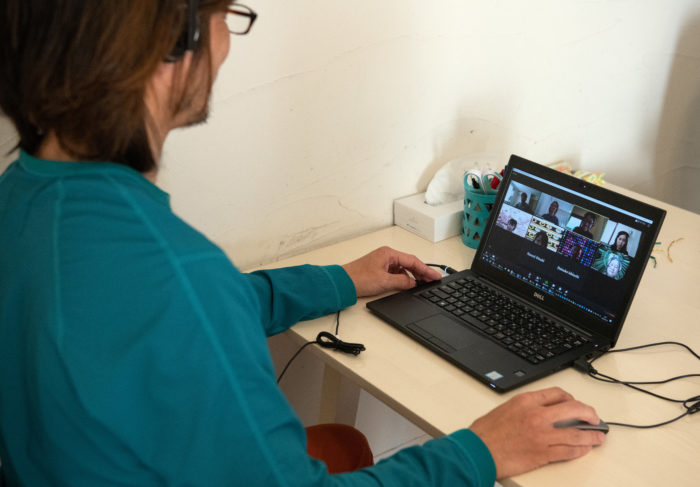3 ways HR leaders can build new capabilities during COVID-19
- HRM Asia Newsroom

As businesses worldwide cancel in-person training due to the coronavirus, they are overwhelmingly turning to virtual learning. Whether that means upskilling the front line or adding new capabilities to managers, most leaders agree on one thing: They must continue to provide myriad ways to add new skills while keeping employees safe.
Collaborative social learning was already on the rise before the COVID-19 pandemic. In fact, what we are seeing is more Chief Learning Officers experimenting with new ways to deliver training, such as re-imagining virtual learning and offering online coaching from firms such as BetterUp and Thrive Global, as well as integrating online visual collaboration tools such as Miro and Mural to enable remote teams to participate in online design thinking sessions.
For some companies, finding new ways to close the skills gap will emerge as a positive long-term outcome of the pandemic we are experiencing on a daily basis.
Here are three suggestions for building capabilities, based on what I am seeing from our clients as they re-invent learning and development during these uncertain times.
1. Build a COVID-19 HR Response Team
HR and learning leaders can use this time to create a comprehensive inventory of their learning offerings by delivery type and to focus on how to optimize virtual learning. In many cases, the first step is to launch some type of governance function, often a cross-functional team composed of stakeholders from HR business partners, corporate learning leaders, IT and learning delivery associates. This team can also work with the company’s broader Business Continuity team to create training and HR solutions focused on ensuring a safe workplace as part of a broader post COVID-19 effort.
Once the HR response team has visibility into the current learning portfolio, then it can decide which learning solutions need to be re-imagined into virtual formats. The key here is that the HR response team must agree on the immediate issues they must focus on for a safe recovery going back to work as well as to continue to upskill their workers during this pandemic.
For example, the team can prioritize areas that are critical now because of COVID-19. Some of these include training remote workers and managers of remote workers, creating a process to manage contact tracing as employees return to work and agreeing on a plan for sharing talent across organizations.
One innovative new initiative launched by a team of CHROs from Accenture, Lincoln Financial, Verizon and ServiceNow is called People + Work Connect, an online platform connecting companies laying off or furloughing people with those companies in urgent need of workers. These are just a few of the myriad decisions this COVID-19 HR Response Team will be called upon to address in the coming weeks and months.
2. Create a Learning Ecosystem to Upskill Workers
In the Workforce of the Future 2030, PwC reports a third of employees are anxious about having their job automated and a stunning 84% are willing to learn new skills to fill in their gaps. How PwC is approaching the upskilling challenge provides a model for others, particularly because the level of anxiety has only increased in the past 60 days as employees see massive unemployment hitting their communities and in many cases their own organization as a result of COVID-19.
Sarah McEneaney, partner and digital talent leader at PwC, stresses three critical success factors to their upskilling program:
- It is sponsored by the business, owned by CEO and Senior Partner Tim Ryan and enabled by a collaboration between the business and the HR function.
- Digital upskilling is a multi-layer approach, including the Digital Hub for all employees; Digital Academy for all employees (over 60% have already taken part in this) and the Digital Accelerator (over 6,000 employees applied to the program, which currently has 1,800 participants).
- Digital upskilling is designed to offer PwC employees multiple modalities of learning digital skills, from instructor-led to video games, learning apps and podcasts. Providing upskilling in a range of learning modalities offers employees the opportunity to learn in a style that best suits their preferences.
In addition to designing a multi-layered approach to upskilling workers, companies are also borrowing from non-traditional learning practices to create collaborative and engaging social learning solutions. Using employee personas and experience journey maps, Cargill’s Julie Dervin, head of Global Learning and Development, has been able to scale and democratize Cargill’s learning, making it available to all employees while decreasing per participant cost from 40-70% depending on the digital learning program. The key has been creating an ecosystem of diverse key learning solution partners to re-imagine the employee learning experience, making it highly engaging, more personalized and accessible to all employees.
Programs like those developed at PwC and Cargill address another key problem facing many employers: Expanding the footprint of learning from a nomination-only process to one that can be accessed by all employees empowers everyone to develop critical skills needed for their continued employability.
3. Take the Opportunity to Increase your Investment in Learning and Development
While some companies are cutting back on learning and development during the COVID-19 crisis, others are using this moment to increase their investment in training. Earl’s Restaurant chain, a family-owned premium casual dining chain of 68 restaurants in the United States and Canada, is doing just that: investing in virtual learning not just for Earl’s leadership team but for all of its 6,500-strong workforce.
Rob Craig, manager of Training and Development, elaborates, “We are using personalized adaptive learning to bring a laser focus to what new skills are needed to prepare our front-line kitchen crew and servers to return to work in a safe manner. These new skills range from how to maximize space in a small kitchen, connect with guests from behind a face mask, use proper etiquette in greeting guests and be proficient in guiding guests to use new technologies (in place of paper menus) to order dinner.”
Area 9 Lyceum Chief Learning Officer Nick Howe, one of the learning partners of Earl’s, believes this investment in new skills training was made possible by using adaptive learning to reduce what Howe calls “content bloating,” the tendency among learning professionals to offer all the content possible on a given topic without taking into account the efficiency of the learning process. Earl’s, on the other hand, has been able to quickly create new learning solutions that are highly relevant during our current pandemic and are responsive to exactly what Earl’s employees need to learn in order to create a safe dining experience.
As we continue to operate in this new normal of working and learning, more companies will need to be proactive in creating HR response teams, in identifying a new set of skills during these uncertain times and in responding to make learning accessible to all learners while they meet the increased demands on-the-job.
I believe more HR leaders should consider the current crisis as an opportunity to accelerate many of the future of work initiatives they explored in 2019, such as transforming corporate learning and making this accessible to all learners, creating successful strategies for remote working and managing remote work teams, and launching new upskilling programs to address new skills and capabilities needed for the business.






